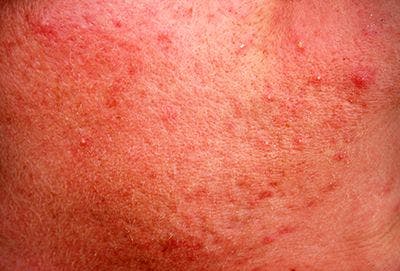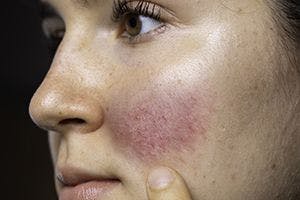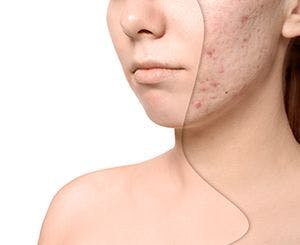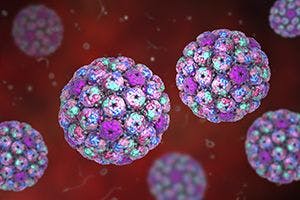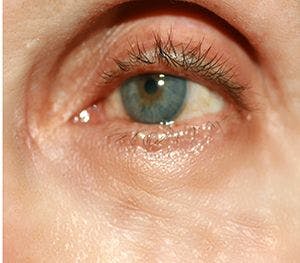- Acne
- Actinic Keratosis
- Aesthetics
- Alopecia
- Atopic Dermatitis
- Buy-and-Bill
- COVID-19
- Case-Based Roundtable
- Chronic Hand Eczema
- Drug Watch
- Eczema
- General Dermatology
- Hidradenitis Suppurativa
- Melasma
- NP and PA
- Pediatric Dermatology
- Pigmentary Disorders
- Practice Management
- Precision Medicine and Biologics
- Prurigo Nodularis
- Psoriasis
- Psoriatic Arthritis
- Rare Disease
- Rosacea
- Skin Cancer
- Vitiligo
- Wound Care
Publication
Article
Dermatology Times
Challenges with treating eyelid eczema
Author(s):
Not treating, incorrectly treating or undertreating eyelid eczema can result in significant patient suffering. Finding the root of the problem is key to safe and effective therapy, Dr. Peter Lio says.
Like the name implies, eyelid eczema is fairly common among patients with eczema, or atopic dermatitis. But it also affects patients with no real history of skin problems and can impact quality of life significantly, according to Peter Lio, M.D., clinical assistant professor of Dermatology and Pediatrics at Northwestern University Feinberg School of Medicine and founding partner, Medical Dermatology Associates of Chicago.
“Doing our best to get to the root of it is important for safe and effective therapy, but is not always easy,” says Dr. Lio, a Scientific Advisory Committee member of the National Eczema Association.
He likens the eyelids to the “canary in the coal mine.” They’re delicate and can be affected with signs of inflammation and allergy when other areas may not, he says.
“For example, a relatively common cause of eyelid eczema is allergic contact dermatitis to a cosmetic or cleanser. In this case, one might expect the entire face - even the scalp when the culprit is a shampoo or conditioner to be involved. However, many times, it is largely limited to the eyelids. For our patients with atopic dermatitis, it is an even tougher mystery. We have to figure out if it is just another manifestation of their atopic dermatitis or if there is another issue that is complicating it.”
Dr. Lio says he has seen patients who have been to several different physicians, have applied steroids to the eyelid area for as long as months; yet, they haven’t been patch tested. That’s a big concern given that skin in the area is so delicate, he says.
“It’s a very sensitive area with some of the thinnest skin on the body, so we have to be extra-careful in the eyelid area. It is also very close to the eyes, so longer-term side effects such as cataracts and glaucoma are much more likely when treating in this area,” he says.
Detective work can take time. It can be tempting to just throw some steroids at it and hope for the best, he says. And steroids might do the trick with an acute irritant dermatitis, but in the setting of allergic contact dermatitis, underlying eczema or even less-common diagnoses such as connective tissue disease, steroids are not a long-term solution, he says. A careful examination, a good history and often patch tests to discover the root of the problem are required, according to Dr. Lio.
Best practices
Dr. Lio says his general approach is to identify it as “eyelid dermatitis” and explain to patients the goal to determine if there is an underlying driver of the disease.
“I take a careful history, do a full exam to see if they have other suggestive lesions of eczema or contact dermatitis or connective tissue disease on the body and usually will explain patch testing. I then have a template for an ‘eyelid dermatitis plan’ that has a super gentle shampoo, conditioner, facial cleanser [and] moisturizer built in,” he says.
The aim of this plan is to remove common allergens, such as cocamidopropyl betaine and fragrance. He then often uses a mild topical steroid for a few days to cool things down, since mild steroids work quickly, reliably and usually don’t sting or burn.
“Then, I will transition them to a non-steroidal topical such as tacrolimus, pimecrolimus or crisaborole,” he says. “For milder cases, this might be all they need. But usually I am going to have them schedule patch testing ASAP so that we can be sure there are no contactants playing a role. Even if negative, of course, there still may be allergens that we have not tested. But I explain we test for 80 of the more common ones and that helps us pick up a fair number without going overboard.”
Avoid treating around eyelids
Prescribing potent corticosteroids or even milder corticosteroids over long periods is not very safe for the eyelids, according to Dr. Lio.
Dermatologists and other providers have to be extra careful treating patients around the eyes. Dr. Lio recommends against starting with nonsteroidal topicals, as they seem much more likely to sting and burn. And, in his opinion, nonsteroidal topicals do not work as quickly or reliably in this context -especially for more severe disease.
Sometimes the very treatments used to control atopic dermatitis can cause eye issues. Researchers report of a case of an adult patient with severe atopic dermatitis who was prescribed dupilumab and developed blepharoconjunctivitis, published December 2019 in the American Journal of Ophthalmology Case Reports.1
Eye problems can occur with dupilumab use, according to Dr. Lio. It has been a tremendous advance for many patients with moderate and severe disease, but it is not without adverse effects, either, he says.
“The eye issues seem to occur in around 10% of patients and include conjunctivitis, eye pruritus, blepharitis, keratitis and dry eye. In addition, there have been reports of head and neck dermatitis that has developed in patients on dupilumab,” he says. “These findings may or may not be related, but they represent a significant therapeutic challenge for those patients, and it can be refractory to treatments. Many people are working to better understand the etiopathogenesis of these and to find optimal treatments.”
There are many new topical and systemic medications in the pipeline that should greatly help patients with atopic dermatitis and more on the eyelids. Dr. Lio says that the investigational medications most likely to help eyelid issues will probably be topical drugs like topical Janus kinase (JAK) inhibitors, tapinarof and many others that could be approved within the next few years.
In the meantime, not treating, incorrectly treating or undertreating eyelid eczema or dermatitis can result in significant patient suffering, according to Dr. Lio.
“They rub their eyelids. They sometimes get infected. They can actually cause damage to their eyes with enough chronic rubbing. It’s pretty terrible!” he says. “And I have had patients who have been suffering for months and even years. Eczema is pretty crummy anywhere, but on the eyelids I’d argue it’s even worse.”
Disclosures:
Disclosure: Dr. Lio has served as an investigator, speaker and advisor for Regeneron Sanofi Genzyme; an investigator and advisor for AbbVie and AOBiome; an advisor and speaker for L’Oreal, Pfizer, Pierre-Fabre, TopMD; and an advisor for Altus Labs, Amyris, Dermavant, Dermira, Eli Lilly, Exeltis, IntraDerm, Johnson & Johnson, Kiniksa, La Roche-Posay, LEO, Menlo, Micreos, Realm, Syncere, Theraplex, Unilever, and Verric
References:
1. Paulose SA, Sherman SW, Dagi glass LR, Suh LH. Dupilumab-associated blepharoconjunctivitis. Am J Ophthalmol Case Rep. 2019;16:100550.
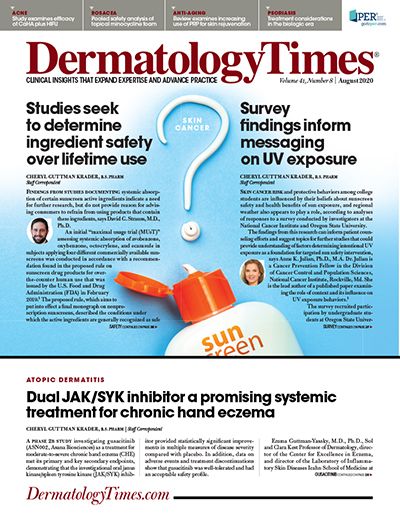
Newsletter
Like what you’re reading? Subscribe to Dermatology Times for weekly updates on therapies, innovations, and real-world practice tips.




